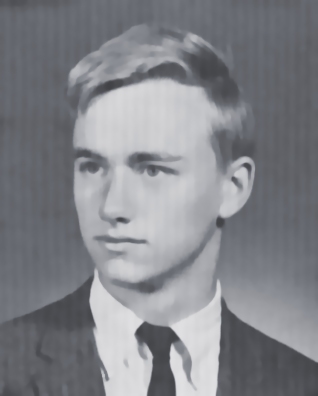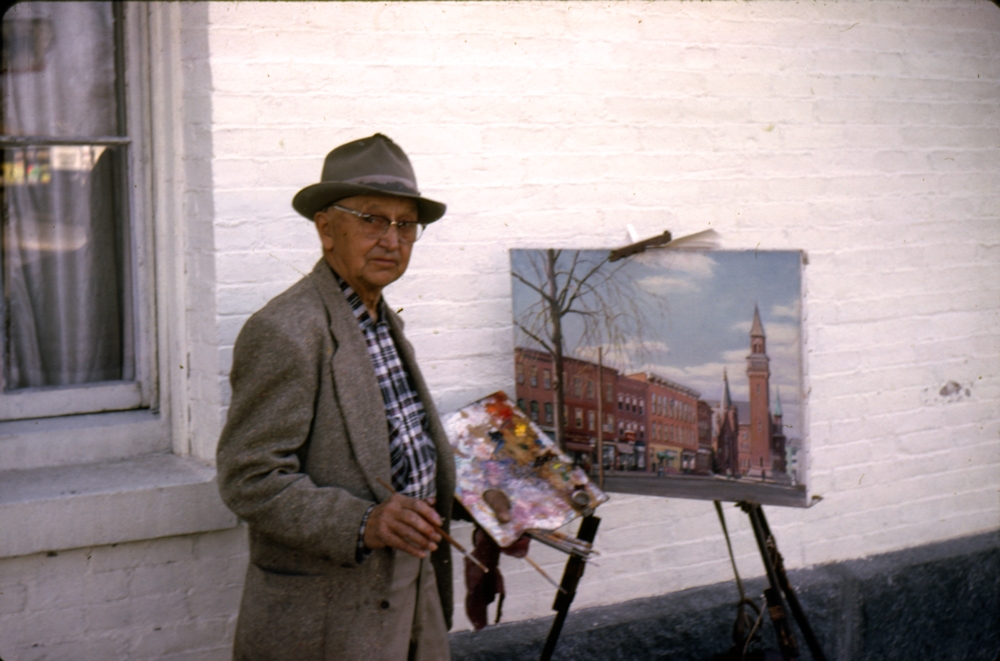
Anyone familiar with Easthampton in the ’40s through the ’60s is likely to recall a taciturn gentleman with an easel and paintbox, often engaged in capturing a town landmark or rural scene. Albert Kiesling (1885-1968) was born in Clinton, Mass., and moved to Easthampton to work in the textile mills. He was a protégé and friend of the American expressionist painter Oscar F. Adler (1868-1932), another Clinton native. In fact, Kiesling and Adler often painted the same scenes together.
In the summer of 2016, Easthampton CityArts+, in association with Albert Kiesling’s family, mounted an exhibition and sale of a large group of his paintings, at the Mill Arts Project (MAP) Gallery at Eastworks in Easthampton. The following video, from Easthampton Media, is an excellent introduction to Kiesling’s work. (Alumni from certain eras may recognize some of the people interviewed.)
There are five known Kiesling paintings of Williston scenes. One had been on campus since 1945. Following the CityArts+ exhibit, Williston Northampton was able to obtain the other four, through a combination of alumni generosity and purchases. They are:
The Old Gymnasium

The Old Williston Seminary Gym, with its distinctive tower, was built in 1864, the first free-standing athletic building in any American secondary school. It stood on High Street, at the rear of the original Williston campus. Rendered largely obsolete by the construction of the Recreation Center (now the Reed Campus Center) in 1930, it was razed following the school’s consolidation onto the present campus in 1951. Kiesling painted the scene in 1952. Williston Northampton was able to acquire the painting through the generosity of Patricia Zavorski Coon ’61. This painting currently hangs in the office of the Director of Athletics.
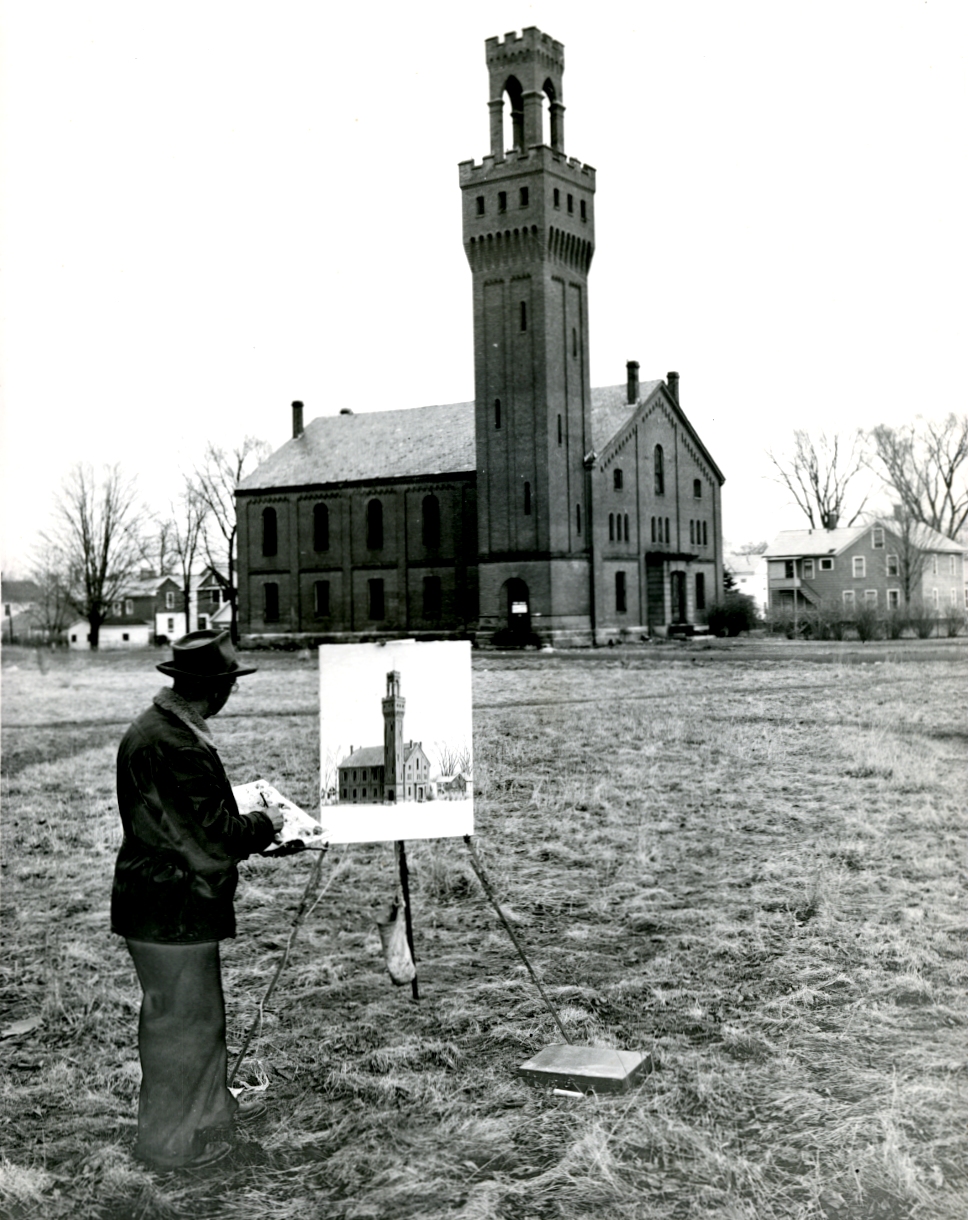
The Button Mill
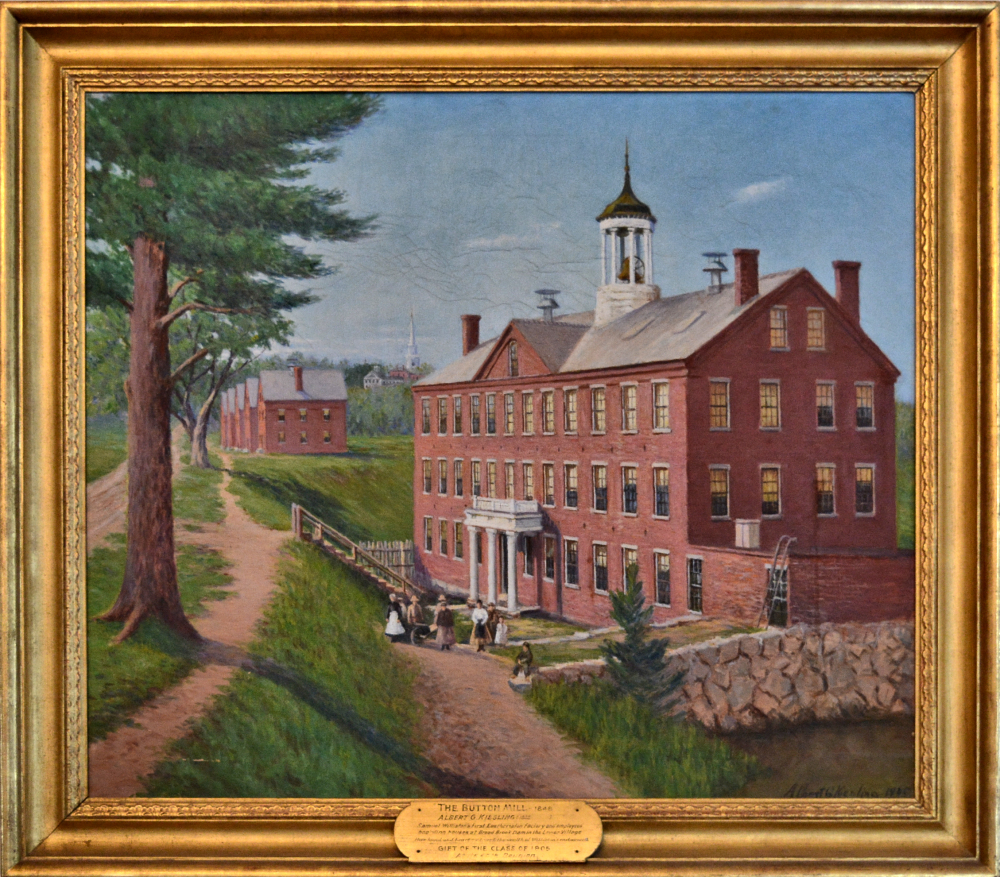
The painting of the original Williston Button Mill, Easthampton’s first factory building, was commissioned in 1945 by Charles Johnson, class of 1875, Treasurer of Easthampton Savings Bank, and presented to the school by the Class of 1905, one of whose members, Guy Richard Carpenter, was instrumental in tracking down and preserving many of the documents and memorabilia that now comprise the Williston Northampton Archives. The rendering of the building, erected 1846-47, is accurate, but Kiesling has placed it on the site of the so-called “Button Building” on Union Street. That structure, which still stands, was erected in 1861-62, while the original button factory remains as part of the mill complex on Cottage Street. One of the workers’ tenement houses beyond the mill also survives, now home to the Easthampton Diner. Kiesling added a couple of historical touches to the background: the spire of the Payson (now Easthampton Congregational) Church and, in front of it, Williston’s original (1841) White Seminary building. This painting hangs in the front parlor of the Head of School’s Residence.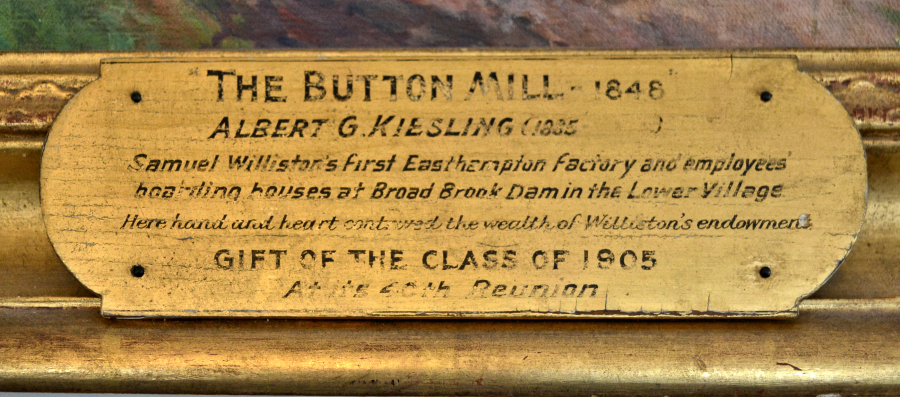
The Old Campus
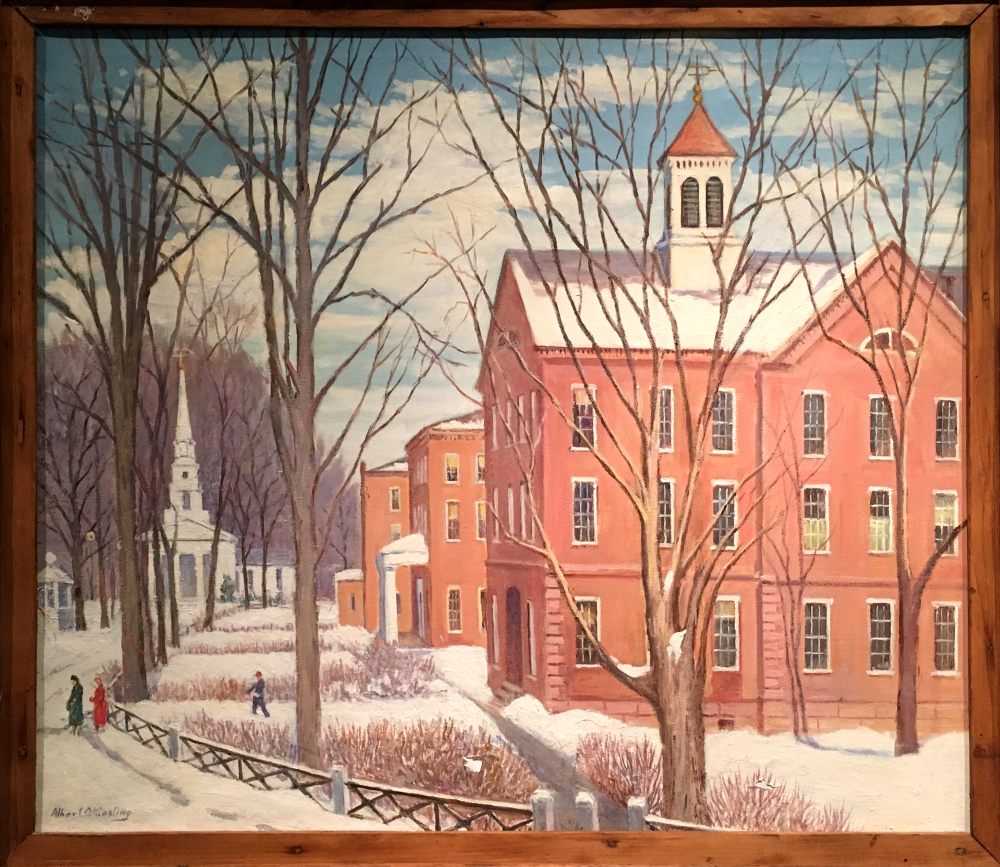
This undated painting now hangs in the Advancement Conference Room in the Williston Homestead. Purchased in 2016 via the Archives Fund, it shows the pre-1951 campus from the intersection of Main and Union Streets, from the vantage point of the Congregational Church’s front lawn. The buildings, from right, are South, Middle, and North Halls. All these structures were torn down after the move to the New Campus in 1951, but a portion of the distinctive iron fence remains in place. Also visible are the Maher Fountain, which remains today, and the First Congregational Church, which succumbed to fire in 1929.
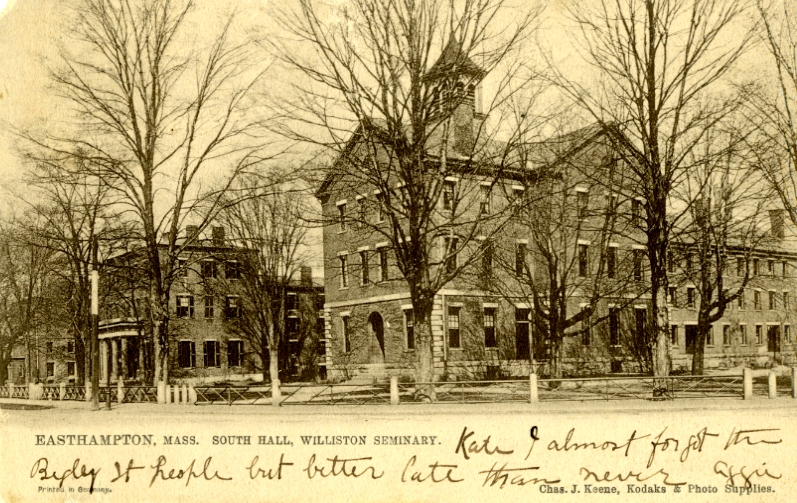
Payson Hall
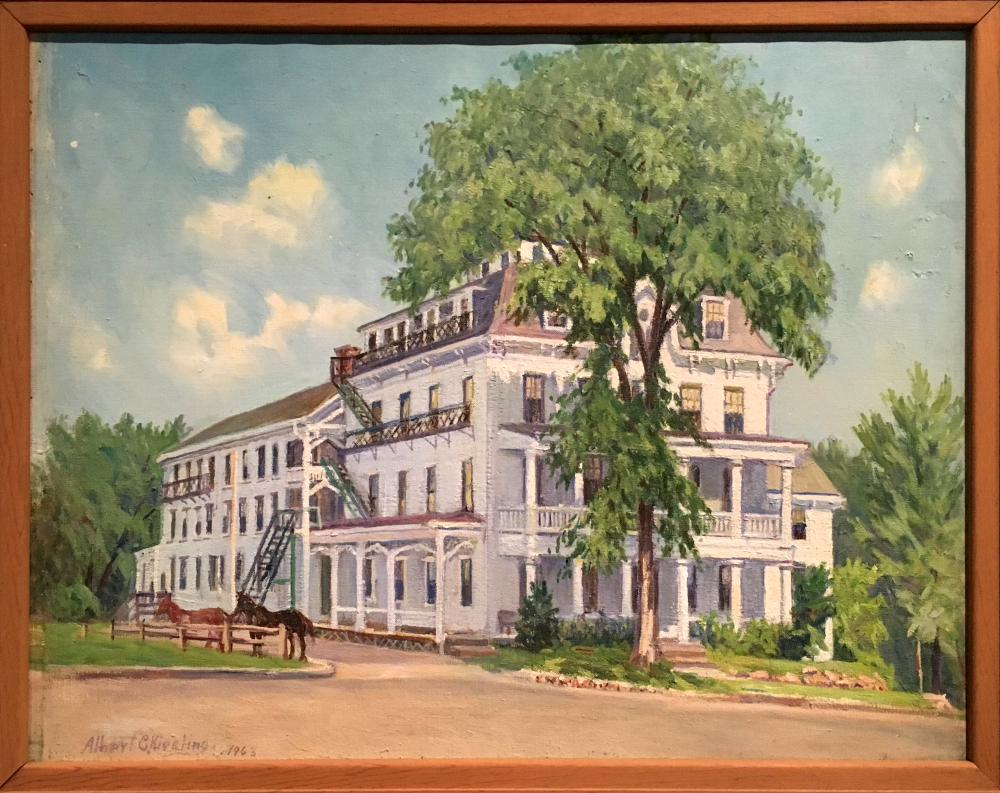
In the mid-19th century, Hill’s Mansion House was Easthampton’s grand hotel. Even then, it housed Williston students able to pay the premium rates. The huge wooden building stood at the top of the hill on the corner of Main and Northampton Streets. In the early 20th century, when the hotel business had fallen off, the school bought the building and renamed it Payson Hall. It was used as a dormitory, dining commons, and for many years, the home of the Williston Junior School. From the early 1950s on the structure, in increasingly fragile condition, hosted inexpensive apartments. It burned in the early 1970s. Kiesling’s 1963 painting, part of the 2016 purchase, is now in the office of the Director of Alumni Engagement.
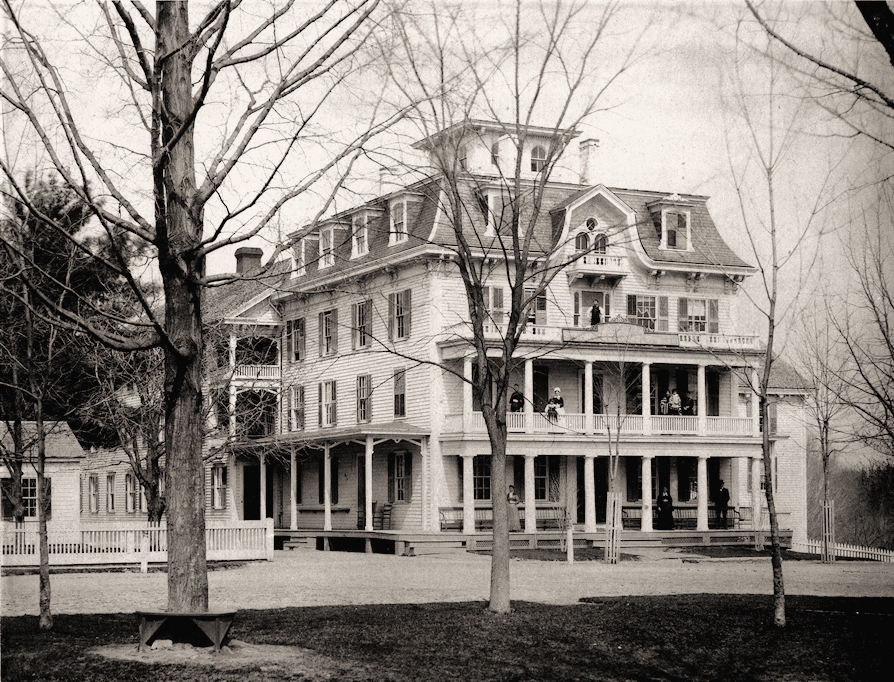
The Williston Birthplace
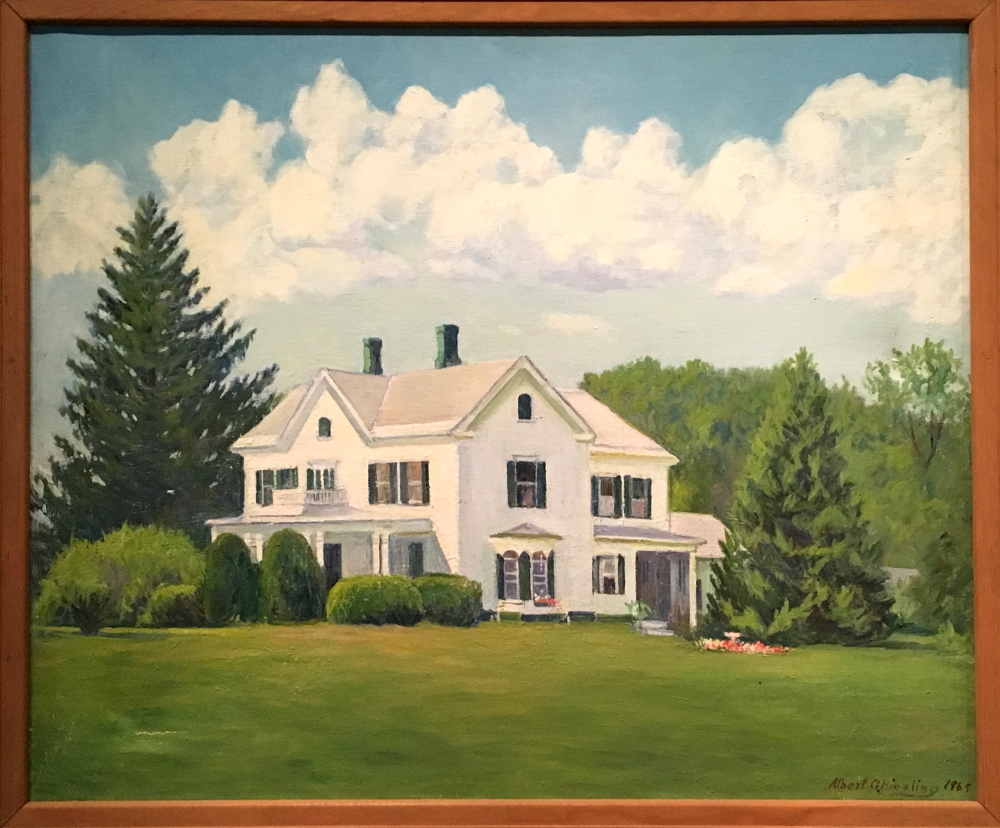
Here the subject is the Payson Williston parsonage, also known as “The Birthplace,” on Park Street, opposite the Homestead. Dated 1968, thus one of Kiesling’s last paintings, this seems less successful than the others – something in the perspective is not quite right. The artist has set the building well back from the road and included a nonexistent mountain. Also part of the 2016 purchase, this painting presently hangs in the Williston Birthplace, now a faculty residence.

Finally, if you watched the video, you’ll recall that Kiesling was also an enthusiastic creator of snow sculpture, often of epic proportions. On Saturday, February 10, as part of the 5th Annual Easthampton Winterfest, the Nashawannuck Pond Steering Committee will host the First Annual Albert Kiesling Snow Art Competition. Please click the link for details!


